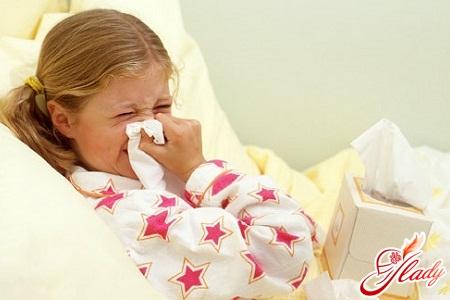
The causative agent of thrush, the cause of its appearance,is Candida fungus. Microorganisms initially form part of the microflora of the oral cavity, colon and vagina of healthy women, but the multiplication of fungi in large numbers leads to unpleasant consequences. Deterioration of the immune system only aggravates the situation. Symptoms of thrush in women are manifested in many aspects, so it is necessary to approach seriously the solution of the problem.
Main symptoms
One symptom of thrush is emergingin the perineum itching. He can be present both constantly and intensify a week before the month, with long walks on foot, using sanitary napkins or while wearing underwear made of synthetic materials. Often the itching and accompanying unpleasant sensations occur after taking hot baths or at night. Especially strongly the symptoms are expressed in women predisposed to allergy. These are the first symptoms of infection, you must immediately take any action. Unpleasant sensations and itching often cause women to comb the affected area, which leads to the spread of infection, resulting in inflammation of the external genitalia, their redness and swelling. With thrush, the vaginal mucosa is very sensitive, which can create problems when urinating or taking a shower and bath. An important sign that indicates the onset of infection is the discharge from the genitals. The glands of the vagina provoke copious transparent secretions, which is the norm. With the disease, the discharge acquires whitish color and a rather viscous consistency, because of what the disease has acquired such a name. Unpleasant sensations can appear and at intimal affinity that occurs because of puffiness and an inflammation of a vulva and a vagina. The soreness of sensations can lead to fear of a woman before sexual intercourse, which puts in jeopardy normal family relationships. 
Classification and causes of thrush
The thrush is differentiated depending on the primary lesion:
The main focus of the disease also has a different nature, therefore, depending on its distribution, the following are distinguished:
The causes of thrush in women are veryare manifold. The main causes of the disease include such a factor as prolonged treatment with antibiotics. There is a well-founded opinion that this factor leads to a violation of the microflora of the vagina, thereby increasing the risk of vaginal candidiasis. Hormonal reorganization of the body due to pregnancy or lactation is also one of the causes of thrush. According to statistics, it is pregnant or lactating women, due to reduced immunity, are subject to the manifestation of all the main signs of the disease, such as white cheesy discharge. The causes of thrush include both a decrease in immunity, and endocrine diseases that make the body vulnerable and susceptible to infections. The lack of lactobacilli in the microflora of the vagina and, as a consequence, dysbacteriosis puts local immunity under attack. The cause of thrush is also an unprotected sexual intercourse, as the risk for women to acquire an infection due to sexual contact with an infected man is very high, about 80%. 
Urogenital Candidiasis
Medicine identifies three forms of thrush: infection, chronic thrush and urogenital candidiasis. In the case when the body of a woman is a carrier of a fungus, then she does not have any complaints. Nevertheless, the disease can be easily detected using a smear. The situation is aggravated during pregnancy, since the carrier woman, even in the absence of visible signs, can infect her baby during labor. The acute form of the disease has such signs as redness, itching, swelling and rashes on the skin and mucous membranes of the vagina. With prolonged manifestation of the above mentioned signs and absence of treatment, as a rule, more than two months, one can speak of the transition of the disease to the stage of a chronic disease. Urogenital candidiasis has such symptoms as the appearance of an unpleasant odor in the course of further development of the disease, curdled discharge, which can be profuse or moderate, burning and itching at night, especially after taking a hot bath or sexual intercourse. During illness it is better to refrain from sexual contacts in order to protect your partner from the disease. With the most neglected forms, sexual intercourse is impossible. Therefore, it is extremely important to focus on treating thrush.
Treatment and prevention
When symptoms of the disease appearexamination with a gynecologist. For diagnosis, women take a smear from the mucous membranes of the vagina and rectum, the cervical canal and the urethra. Before visiting a doctor, it is necessary to refrain from hygienic procedures, including the use of antiseptic drugs. The main treatment of the disease in women is considered to be antifungal agents that affect exactly the type of fungus that a woman is sick with, which can be detected during the passage of the diagnosis. For effective treatment, drugs should be used both topically and systemically. Preparations for topical application are ointments, creams, vaginal tablets and suppositories. Systemic drugs include tablets and capsules taken orally during treatment. The main drugs used in the treatment of thrush include diflucane, or flucanazole, and pimafucin. They are applied either in one step, or appointed for a period of three days. If the lesion is severe, the duration of the treatment may last, depends on the patient's condition. Candles are rarely prescribed, as many women may experience dysbiosis due to treatment. To prevent disease, certain conditions must be observed:
It is not recommended to try yourselfdiagnose the disease, and even more so try to engage in independent treatment. In the case of the appearance of the first symptoms it is necessary to immediately use the help of qualified specialists, and not to rely on the advice of the best girlfriends and advertised drugs. An important aspect of prophylaxis of thrush is nutrition, which should be full. You should know what foods are needed and which ones should be excluded from the diet. These include excess simple carbohydrates, products containing artificial substitutes, preservatives and colorants. It is important to completely abandon bad habits in the form of smoking, limit yourself to alcohol consumption, it is desirable to completely abandon alcoholic beverages.









